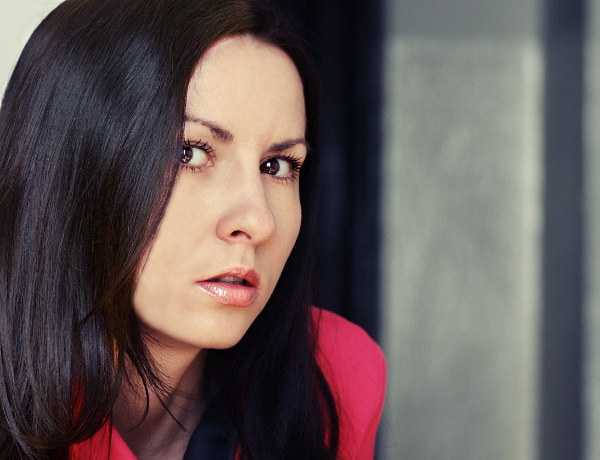As Matt Grum stated, sharpness is often a relative thing. I think a lot of really good head and shoulders portraiture is done with a very narrow DOF, so that focus blurs quickly as you move away from the front of the face.
That said, you can control exactly what is in focus if you wish. Auto focus is by default performed by testing multiple focus points, which can nail focus on "the face" as a whole, however it won't do so well if you need to focus on one small part of someones face, such as your son's eyes. You can take more control by explicitly selecting a single AF point, and by using "focus and recompose".
Its best to use the center focus point, as it is usually a cross-type focus point that can detect sharpness in multiple planes (usually horizontal and vertical, however some use the complimentary oblique diagonal planes). If you have the option, reconfiguring your camera to separate the AF trigger from the shutter button can also help. You can often redirect AF control to a button on the back of the camera, so it can be triggered independently of the shutter and meter. Place the selected AF point on an eye, find and lock focus, then recompose the scene the way you want it, and meter & expose with the shutter button. (If you do not have the option of separating your AF control from your shutter button, just depress the shutter half way when focusing, keep it half-depressed while recomposing, then fully depress when you are ready to take the shot.)
That said, I would like to support Jerry Coffin's comment to Matt's answer:
Many have not only been sharpened, but had the brightness and saturation "enhanced" as well. These don't increase sharpness, but can draw much more attention to the eyes.
- Jerry Coffin
Sharpness is a factor of two things: contrast and acutance. Contrast itself can be a factor of two things: difference in brightness, and difference in color. Bright and dark areas of an image next to each other will create contrast, and at a fine resolution, can create sharpness. Complementary colors will also create contrast in their own right, even if they are the same brightness. Acutance is the harshness of edges, and is usually the way we adjust sharpness in our images during post-processing...by adding acutance along fine edges.
Even without sharpening, you can enhance apparent sharpness by enhancing the color of your photos. This is usually done by boosting saturation, or, if you have it, vibrancy.









